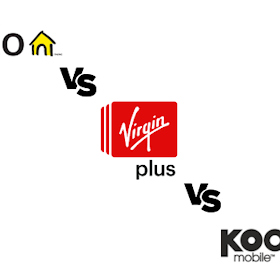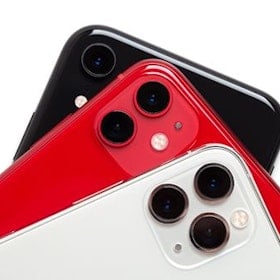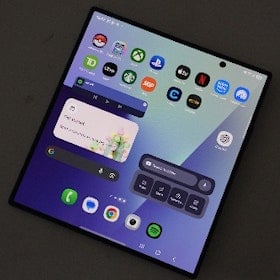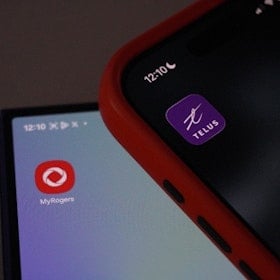
The One (M8) has a lot to live up to. Its predecessor, the HTC One – AKA the M7, was a fantastic device. It won Best Phone of 2013 at this year’s MWC (Mobile World Congress) and proved definitively that HTC could release a smartphone the equal of or better than its biggest competitor: Samsung.
This time around the pressure is on HTC to prove that it isn’t a one-hit wonder with the One (M8). In short: mission accomplished.
Design
4.5/5

The One (M8) may look a lot like the M7 in press photos, but in reality the difference is immediatly noticeable. It still has a beautiful brushed aluminium case, but this time it extends up and around the sides, instead of connecting to a plastic rim.
The gentler curves create a device that not only feels premium, but is surprisingly comfortable to hold and to use.
The metal brushing technique has been improved, too. It’s much smoother than the finish on the M7. The result is that the M8 reflects light in a really eye-catching manner. Once again this isn’t something that shows up too well in photos or on video, but in person it’s striking.
HTC's 'Boomsound' speakers make a comeback at the top and bottom of the front panel and again it's a trade-off between taking up precious hardware real-estate and providing a better sound. The headphone jack has been moved to the bottom near the USB 2.0 connector and the volume rocker remains on the right side.

The MicroSD port is something that we’re very happy to see on this year's model. It’s on the right towards the top, opposite the SIM tray which has a larger opening than you would expect. We’re told that this is to accommodate an eventual dual-SIM version for Asian markets.
Despite all its virtues the One (M8) does have a few design drawbacks. The lock button is still situated at the top, which makes things awkward on this taller handset. HTC would have been better off adopting the same thinking that it did with the upsized One Max and shifting this key button to the side.
Another niggle is that the volume rocker feels really cheap. It sounds like nit-picking, but its loose, plasticky rattling really detracts from the overall quality feel of the M8.
Last, but never least, HTC has completely misunderstood the point of virtual buttons. The idea is to move capacitive keys from the front panel to the screen itself. That way they still take up the same amount of room in menus and home screens, but when you’re watching a video or gaming they can slide neatly out of the way, giving you more screen space.

What HTC has done is move the keys on to the screen, but left the black bar on which they sat, completely with the HTC logo, right where it was. So now the keys take up screen space some of the time, without the added benefit of expanding overall screen size by utilizing the area that they once were. It’s a confounding decision that we still can’t wrap our heads around.
Display
4.5/5

This year’s suite of 1080p display announcements left some users cold. People expected the progressive increase in resolution size to continue indefinitely, but in truth we’re glad to see manufacturers reining themselves in this year in favor of freeing up demand on the battery. Besides, there’s more to a good screen than the number of pixels across the panel.
The 1080p 5-inch display on the HTC One (M8) is fantastic. It displays 441 pixels per inch (ppi), which is a small drop from last year’s 469ppi thanks to the slightly larger screen. In fairness, it’s still a good 115ppi more than an iPhone’s retina display and is one of the best screens we’ve ever seen on a phone.
One thing that the M8 is particularly good at is viewing angles. Tilting the phone to almost any degree barely affects visibility. It's not as sorcery-like as a full OLED panel, but it's close.
Colors aren’t amazingly vibrant but they are realistic. Blacks are very good, although not quite yet to the level of a Nokia ClearBlack display, and whites are good but they do lack the ultra-clean look we’ve come to expect from HTCs.
Responsiveness is high and general use is very smooth. All together it’s a fantastic screen and an exciting indication of where smartphone tech is headed.
User experience
4/5

A cornerstone of the HTC smartphone experience is its Sense user interface (UI), but as HTC continued to find new things to add to this experience, many wondered whether it was becoming to cluttered for the average user.
HTC has slimmed down this UI with Sense 6.0. It’s cleaner, simpler and more relaxing to the eye. As expected, everything is very snappy. Multitasking works so well that we often forget how much we have running at any one time, browsing is very fast and the menu system is as smooth as butter.
Top of our list of things to praise is the lock screen. For some reason, the shift towards placing as much functionality in to the lock screen has been moving backwards over the last year with almost every manufacturer but HTC.
HTC has wisely kept its app shortcut unlock system. The customizable app tray at the bottom is accessible while locked. All you have to do is swipe from any icon to the centre of the screen and you’ll jump straight to the app. You can also see any notifications that would regularly be shown on the icon such as with messages or missed calls.
Alternatively, while the screen is on standby you can access it by gesture. Swiping to the left gets you the home screen, to the right is BlinkFeed, upwards is Google Now, downwards is the notifications tray and double-tapping wakes it up, just as if you hit the lock button.

BlinkFeed itself has been revamped. Any website can now make its content available on the BlinkFeed stream, which means more content on the subjects you enjoy. The look of the stream has also been lifted with a soothing green color by default, but you can choose between a few options.
In fact, you can change the whole color theme of the device, which also affects BlinkFeed. Go in to Settings > Personalize > Theme and there are four options to choose between.
The BoomSound speakers are better than ever. We didn’t really notice the difference until we compared them directly with the original HTC One, but when we did the 25% boost in volume and reported upgrade in sound quality was evident.
One of our favorite (and hugely underused) features is still there: the Infrared (IR) blaster. You can set up your HTC One (M8) as a universal remote for your TV, home theatre or cable box. Thanks to the IR blaster in the Home button, it works just like a regular remote, with the added benefit of a TV guide built right in to the app.
Camera
4/5

The camera on the One (M8) is a mixture of good and not so good. On the one hand, it’s very fast, the UI is easy and it offers some interesting options for editing thanks to its unique depth sensor. On the other, image quality isn’t vastly improved over last year and those new editing features don’t always work too well.
For general picture taking, the One (M8) is great thanks to its incredibly fast shutter speed, autofocus and subtle shutter noise. Photos have great color accuracy and look sharp for general uses like social media posting and sharing. Once you blow the photos up to full screen on a computer monitor imperfections become apparent.
The problem is that the Ultrapixel method adopted by HTC is by definition reliant on using less pixels. This has been countered by some clever imaging techniques for smaller images, but leads to a more noise when viewed on larger screens. Like we said, this isn’t an issue with 90% of what people use their cameras for, but for that remaining 10% the drawbacks are there.
Night shots come out OK, but once again not too much better than on the original One (M7). This time around HTC has included a two-tone flash, which gets rid of some of the whitewashed look that so often plagues smartphones, but other than that it’s the same photo quality as we saw last year. That being said, the One (M7) rocked some of the best low-light shots around in its day.

The camera effects are pretty nifty. The depth sensor attempts to separate objects based on how far away they are from the camera. The result is that you can apply filters and effects to the foreground, mid-ground and background respectively, without affecting the others. This doesn’t always work and requires good lighting when the photo is taken to even be an option. It’s a good idea in theory, but in practice we think it needs another 12 months or so before it should be considered a major selling point.
You can still take the Zoe shots introduced last year, as well as dual-camera photos that combine a front and rear camera shot in to one image. There’s now also a 360 degree pan mode, that lets you take an inverse spherical shot of your surroundings.
One of the better additions is the new front-facing 5MP camera. HTC has recognized what few manufacturers do, in that a large portion of the photos people upload are selfies. The ‘selfie cam’ takes better shots than any other front-facing camera we’ve used, and should finally put an end to those awkward shots where you’re trying to get yourself in frame using the rear camera, which are ultimately drawn out as you take more and more photos in search of the perfect one.
As an added bonus you can touch up your selfie shots. There’s an automatic feature that is supposed to remove blemishes and unsightly wrinkles, but we think you’re perfect just the way you are.
Battery life
4/5

Battery life is good, but not amazing. We easily got a full day out of the One (M8), even when playing games and going totally snap-happy with the camera. This is a far cry from two or three years ago when HTC’s flagships often needed a pick-me-up sometime after lunch.
That being said, we never got close to a two-day charge. In fairness that’s to be expected from a phone running this much techno wizardry, but we’d have liked to see something more, nonetheless.
Verdict

The HTC One (M8) is a great smartphone. Like its predecessor it’s beautiful, fast and offers a great user experience. We would like to have seen more camera improvements, but despite its similarities to last year’s model the new shutter speed and fast autofocus make it a pleasure to use.
The screen offered great viewing angles and was visible in direct sunlight, and battery life was thoroughly usable. We can definitely see the One (M8) being one of the bigger contenders for best Android phone in 2014, but it’s not going to be unassailable by the competition in terms of overall quality.
Find Better Phones and Plans
Hundreds of cell phone plans unpacked. All the facts. No surprises.








































